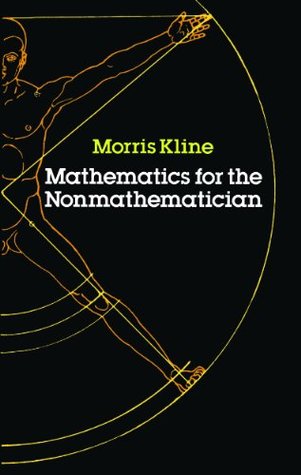More on this book
Community
Kindle Notes & Highlights
The mathematical ideas explored in the preceding chapters, arithmetic, algebra, Euclidean geometry, trigonometry, coordinate geometry, and the various types of functions, comprise a considerable amount of mathematics. Of course, the development of each of these ideas is far more extensive than we have indicated or than school courses usually cover. But the seventeenth century, which inspired and initiated the modern scientific movement, provided the problems and suggestions for new branches of mathematics which dwarf in extent, depth, and power the mathematics we have examined thus far. The
...more
When the acceleration is constant, one can multiply the acceleration by the time of travel and obtain the speed acquired, but this procedure does not yield correct results when the acceleration is variable.
Hence it is desirable to know the direction in which an object is moving. Generally this direction varies from one instant to another, and therein lies the difficulty.
the methods used will not suffice to compute, for example, the maximum or minimum distance of a planet from the sun or from another planet. Nor do they suffice to discuss the motion of a rocket which travels sufficiently far up so that one must take into account the variation in the acceleration due to gravity.
How does one find the length of the path over which the planet travels in a given period of time? This information is important if one wishes to predict the position of the planet at some future instant of time.
the instantaneous rate of change of one variable with respect to another.
the average rate of change is not the significant quantity in many practical and scientific phenomena.
Many other events take place at an instant or are instantaneous. A lightning flash is instantaneous or at least happens so fast that we describe it as happening at an instant.
an instant is merely one value of t, whereas an interval is some range of t-values, as, for example, from t = 0 to t = 20.
Thus, although instantaneous speed is a physical reality, there seems to be a difficulty in stating precisely what it means, and unless we can do so, we shall not be able to work with it mathematically.
Of course, no matter how small the interval over which the average speed is calculated, the result is not the speed at the instant t = 4.
What right do we have to take the number approached by the average speeds to be the speed at t = 4? The answer is that mathematicians have adopted a definition which makes good physical sense. They argue that the smaller the interval of time bordering t = 4 over which the average speeds are computed, the closer must the behavior of the falling body be to that at t = 4. Hence the number approached by average speeds over the smaller and smaller intervals of time bordering t = 4 should be the speed at t = 4. Since mathematics seeks to represent physical phenomena, it quite naturally adopts
...more
The main point that emerges from this section is the possibility of finding instantaneous speed by a general process, the method of increments. No tedious arithmetical calculations are necessary, nor is there any doubt about what the limit approached by the average speeds is.
In 1662 Graunt published his Natural and Political Observations. . . upon the Bills of Mortality, a book which might be said to have launched the trend toward scientific method in the social sciences and which certainly founded the science of statistics.
Perhaps the most important difference between the deductive approach and statistical methods is that the latter tell us what happens to large groups and do not provide definite predictions about any one given case, whereas the former predicts precisely what must happen in individual instances.
About the simplest mathematical device for the distillation of knowledge from data is the average.


